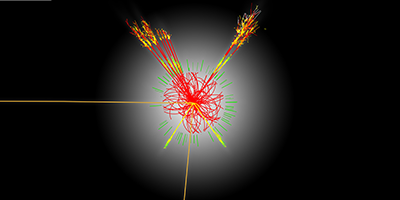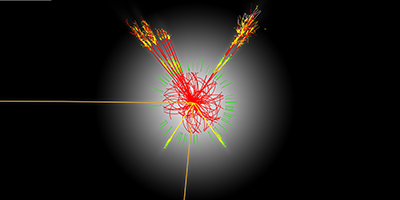The Dark Side of the Higgs
The recently detected Higgs boson may act as a link between particles we are familiar with and also particles that have so far avoided detection, such as dark matter. To investigate this possibility, a new study has searched through data from the Large Hadron Collider (LHC) for events where a Higgs boson decays into “invisible particles,” which leave no trace in LHC’s detectors. The ATLAS collaboration, reporting in Physical Review Letters, finds that the probability of these types of events does not exceed values predicted by the standard model, a result they use to severely constrain theories based on low-mass dark matter particles.
The ATLAS and CMS detectors at the LHC announced their joint discovery of the Higgs boson in July 2012. The detections were based mainly on two interaction pathways in which proton-proton collisions produce Higgs bosons that decay either into two gamma rays or into two Z bosons. But the Higgs may also decay into invisible particles, which may be part of the standard model (like neutrinos) or beyond it (like dark matter).
In their new analysis, the ATLAS collaboration focused on collisions that produce a Z boson and a Higgs boson, with the latter decaying invisibly. The Z boson is detected through its decay into a pair of electrons or muons, whereas the Higgs boson is inferred from missing momentum in the collision products. After subtracting background events, the researchers estimated that the Higgs decays into invisible particles no more than of the time. This, however, is consistent with standard model predictions, allowing the researchers to place the strongest limits yet on the interaction probability of Higgs bosons with dark matter particle candidates in the mass range between and giga-electron-volts. – Michael Schirber





